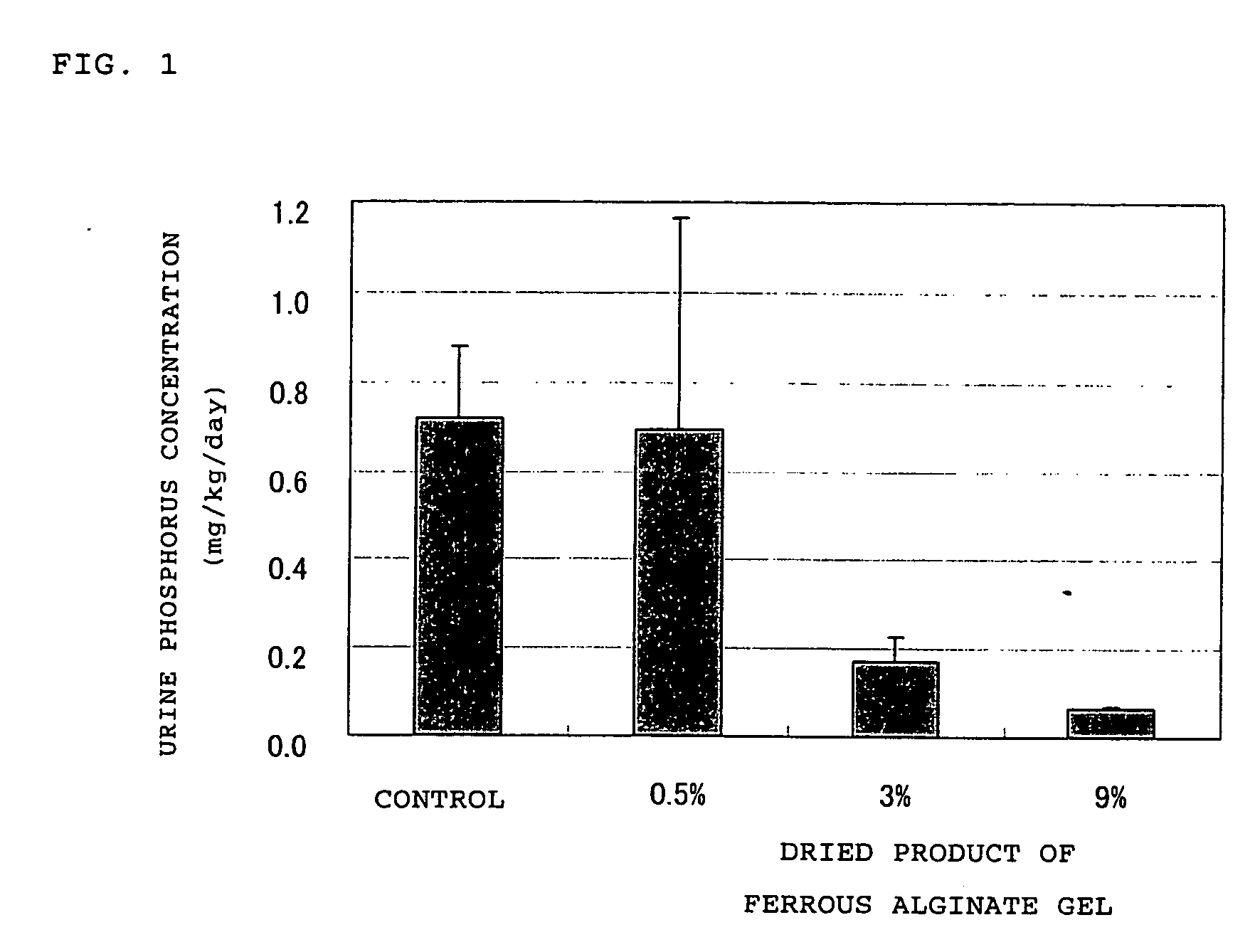Adsorbent for phosphoric acid
a phosphoric acid and phosphoric acid technology, applied in the field of phosphoric acid adsorption, can solve the problems of high time cost and environmental load on activated carbon, difficult removal of phosphoric acid from high concentration organic solutions, and large caloric value of activated carbon, etc., and achieve high performance for adsorption of phosphoric acid. , the effect of easy production
- Summary
- Abstract
- Description
- Claims
- Application Information
AI Technical Summary
Benefits of technology
Problems solved by technology
Method used
Image
Examples
production example 1
(Production of Ferric Alignate Gel)
[0035] 200 ml of aqueous 0.25% sodium alginate solution was dripped by using a roller pump at a rate of about 1 ml / second into 500 ml of aqueous solution of 1% ferric chloride (FeCl3) in a beaker with stirring. The diameter of droplets upon dripping was about 1 mm to about 2 mm. This operation formed a reaction product gel in the form of a substantially regular sphere of about 1.5 mm to about 3 mm in diameter. The gel was transferred to a 300 μm sieve and washed with pure water until the color of the aqueous iron solution is completely lost to produce 52.2 g of gel.
production example 2
(Production of Ferric Pectin Gel)
[0036] 200 ml of aqueous 0.25% pectin solution was dripped by using a roller pump at a rate of about 1 ml / second into 500 ml of aqueous solution of 1% ferric chloride (FeCl3) in a beaker with stirring. The diameter of droplets upon dripping was about 1 mm to about 2 mm. By this operation was formed a reaction product gel having an appearance similar to erythiocyte of about 1.5 mm to about 3 mm in diameter. The gel was transferred to a 300 μm sieve and washed with pure water until the color of the aqueous iron solution is completely lost to produce 51.3 g of gel.
production example 3
(Production of Dried Product of Agar-Immersed Ferric Alginate Gel)
[0051] 52.2 g of the ferric alginate gel prepared in Production Example 1 was charged in 1,000 ml of 0.1% agar solution to immerse for 1 hour while stirring and the resultant was transferred to an about 300 μm sieve and washed with 20 liters of pure water at about 60° C., followed by drying the resultant in an incubator at 60° C. for 5 hours to prepare 0.53 g of a dried product of agar-immersed ferric alginate gel.
PUM
| Property | Measurement | Unit |
|---|---|---|
| Fraction | aaaaa | aaaaa |
| Fraction | aaaaa | aaaaa |
| Fraction | aaaaa | aaaaa |
Abstract
Description
Claims
Application Information
 Login to View More
Login to View More - R&D
- Intellectual Property
- Life Sciences
- Materials
- Tech Scout
- Unparalleled Data Quality
- Higher Quality Content
- 60% Fewer Hallucinations
Browse by: Latest US Patents, China's latest patents, Technical Efficacy Thesaurus, Application Domain, Technology Topic, Popular Technical Reports.
© 2025 PatSnap. All rights reserved.Legal|Privacy policy|Modern Slavery Act Transparency Statement|Sitemap|About US| Contact US: help@patsnap.com

